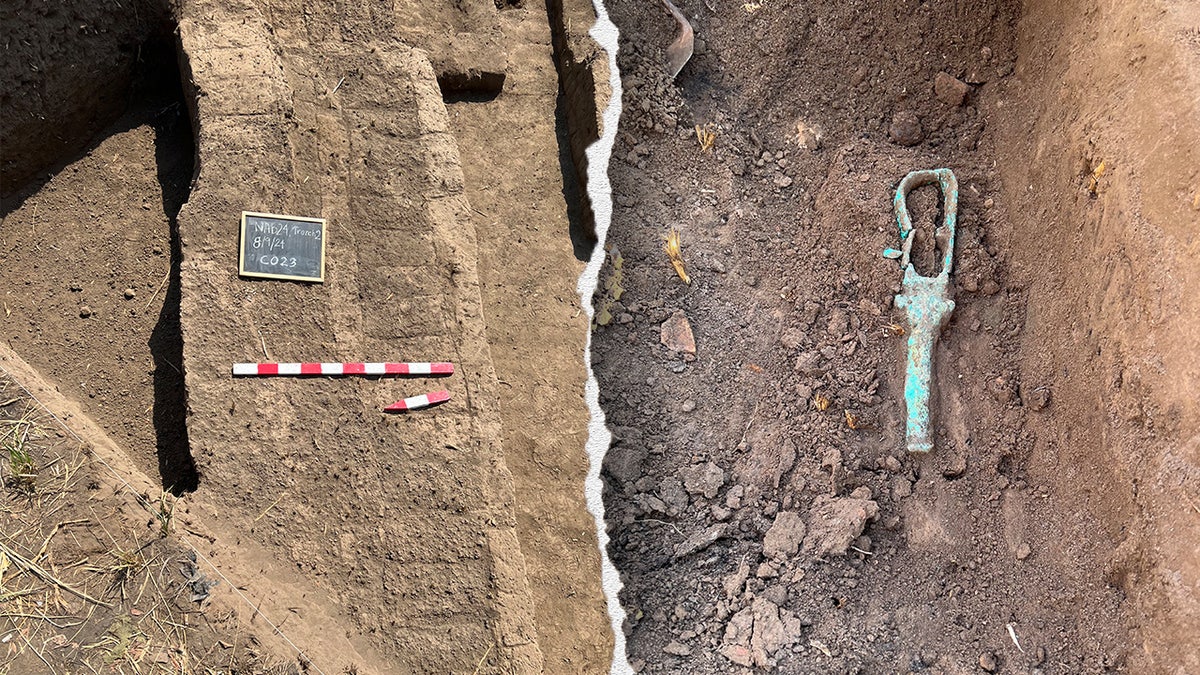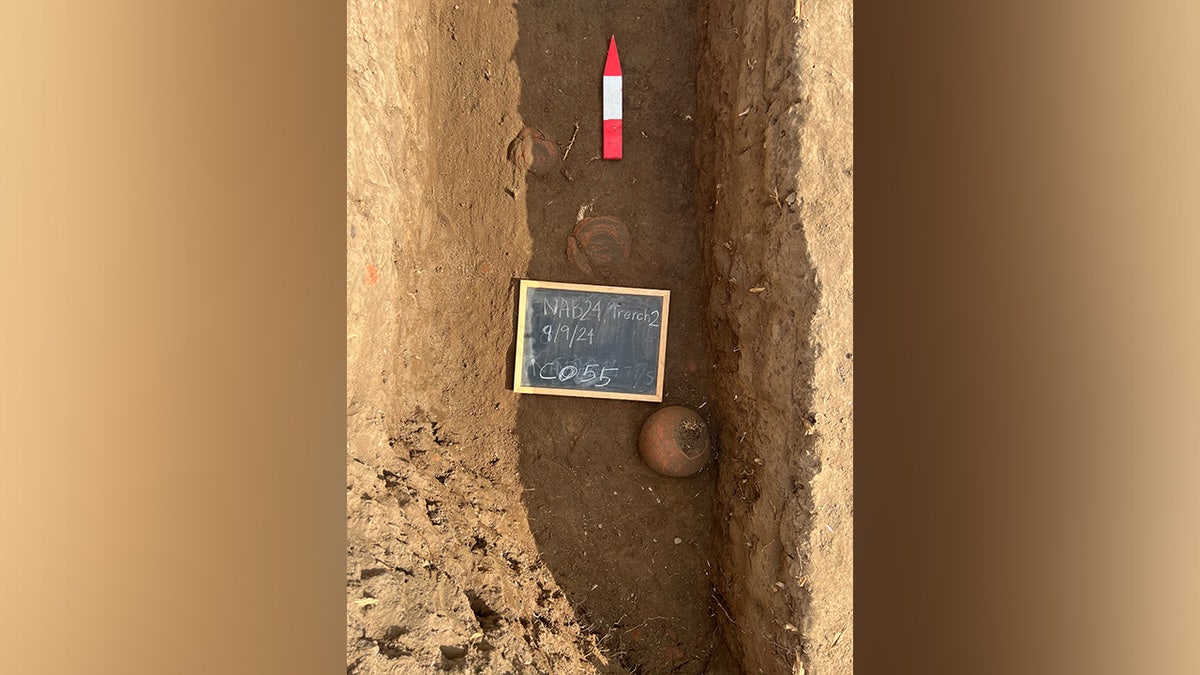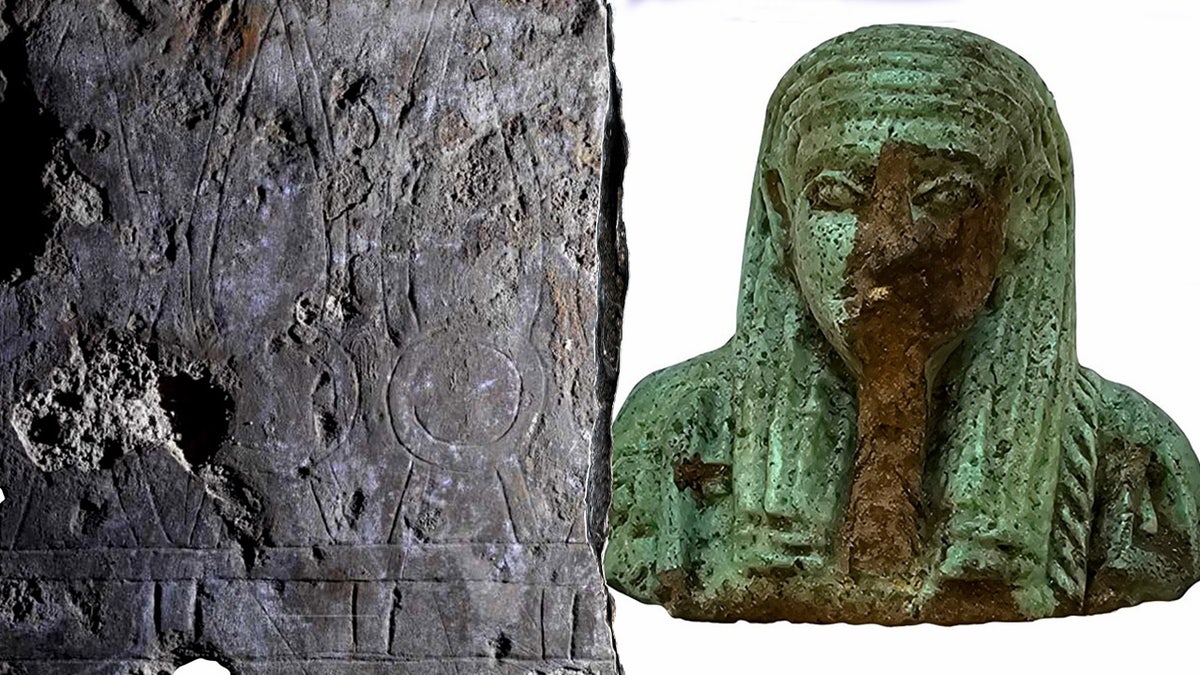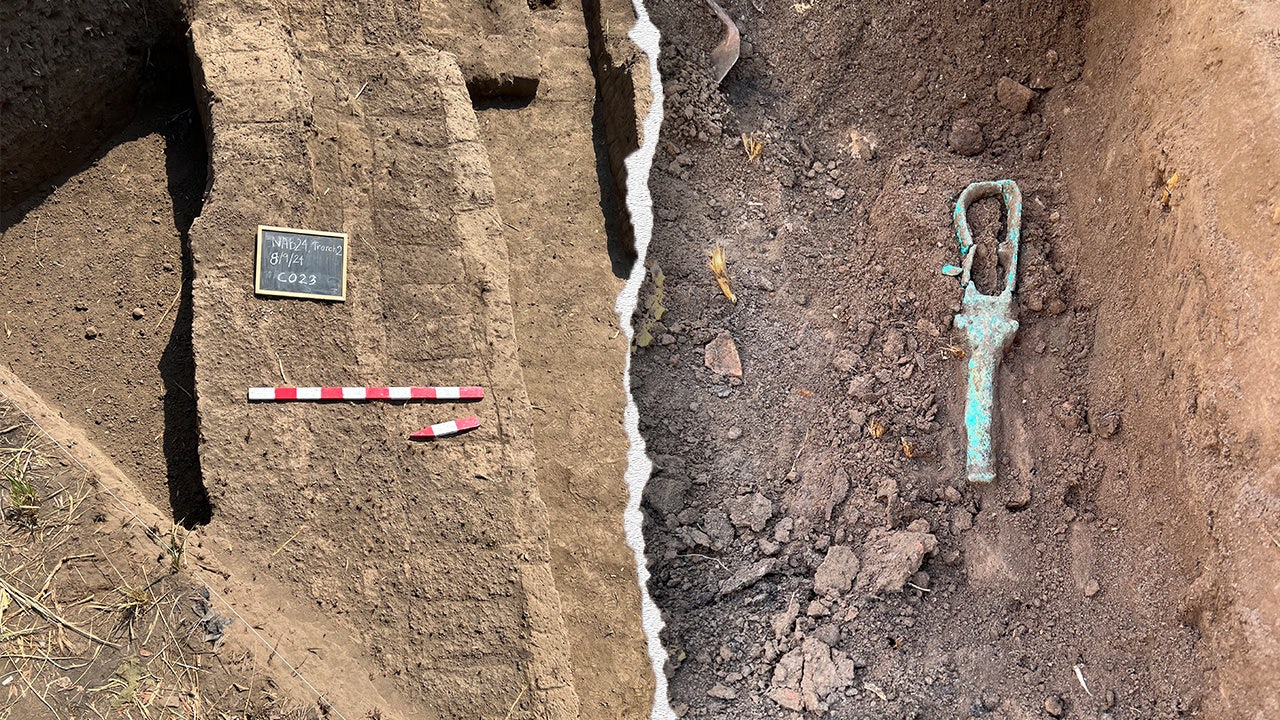Newly discovered ancient tower houses in Nile Delta reveal thriving Ptolemaic city
NEWYou can now listen to Fox News articles!
Archaeologists recently uncovered multistory buildings from a lost Egyptian city in the Nile Delta, fostering new insights into urban life in antiquity.
The ruins of the city – known in ancient times as Imet or Buto – are located at the site now called Tell el-Fara’in. The University of Manchester announced the discovery in a June 24 press release.
Multiple excavations have taken place at the site in past decades, but the latest dig by British archaeologists revealed the presence of multiple multistory structures.
ANCIENT CHRISTIAN TOMB COMPLEX REVEALED BENEATH RUBBLE FROM SYRIA’S CIVIL WAR
The elevated dwellings were found thanks to a combination of remote sensing and satellite imagery technology, said the University of Manchester. The British archaeologists were joined by experts from the University of Sadat City in Cairo.
The high-tech methods led researchers to notice clusters of “ancient mudbricks” before the excavation began.

Archaeologists uncovered the remains of multistory tower houses in the Nile Delta city of Imet, as well as an ancient bronze rattle, seen at right. (University of Manchester)
The university reported, “This approach led to the discovery of dense architectural remains, including substantial tower houses – multistory buildings supported by exceptionally thick foundation walls, which were designed to accommodate a growing population in an increasingly urbanized Delta region.”
University of Manchester lecturer Nicky Nielsen helped lead the excavation.
In a statement, he dated the structures to the Ptolemaic Period, which began around 332 B.C. and ended in 30 B.C.
ARCHAEOLOGISTS UNCOVER LONG-LOST ANCIENT ROMAN BUILDING AT CONSTRUCTION SITE WITH A LITTLE HELP
“These tower houses are mainly found in the Nile Delta between the Late Period and the Roman era, and are rare elsewhere in Egypt,” the Egyptologist said.
“Their presence here shows that Imet was a thriving and densely built city with a complex urban infrastructure.”
Archaeologists also uncovered the remains of granaries, or buildings for storing grain, as well as a ceremonial road tied to the cult of Wadjet, the Ancient Egyptian cobra goddess.

Remote sensing and satellite technology guided archaeologists to hidden architectural remains. (University of Manchester)
Animal enclosures were also observed during the excavation, as well as a series of additional buildings.
“Imet is emerging as a key site for rethinking the archaeology of Late Period Egypt.”
“Elsewhere, excavators found a large building with a limestone plaster floor and massive pillars dating to the mid-Ptolemaic Period,” the University of Manchester noted.
CLICK HERE TO SIGN UP FOR OUR LIFESTYLE NEWSLETTER
“This building was built across the processional road, which once connected to the temple of Wadjet – the city’s patron deity,” the statement continued.
“This ceremonial route appears to have fallen out of use by the mid-Ptolemaic period, offering insight into shifting religious landscapes in Ancient Egypt.”
Smaller artifacts were also uncovered by archaeologists. Pictures from the excavation show an ushabti (a small funerary figurine), a stone slab depicting the god Harpocrates and a bronze sistrum, or rattle, of Hathor, the goddess of music and joy.
For more Lifestyle articles, visit foxnews.com/lifestyle
The excavation will help advance understanding of “the urban, religious and economic life of this city in the Nile Delta during the 4th century BC,” according to university officials.
“This discovery opens new doors to our understanding of daily life, spirituality and urban planning in the Delta,” the statement concluded.

A stone slab bearing the image of Harpocrates, seen at left, and an ushabti funerary figurine, seen right, were among the recently discovered artifacts. (University of Manchester)
“Imet is emerging as a key site for rethinking the archaeology of Late Period Egypt.”
Ancient Egypt has captivated archaeologists for centuries, and many finds from the millennia-old civilization are still being discovered today.
CLICK HERE TO GET THE FOX NEWS APP
In May, several tombs of high-ranking Ancient Egyptian officials were recently uncovered by local archaeologists, dating back to the era of the New Kingdom.
A month earlier, a University of Pennsylvania professor spoke with Fox News Digital about unearthing the tomb of an unknown pharaoh near Abydos.
Source link
editor's pick
latest video
Sports News To You
Subscribe to receive daily sports scores, hot takes, and breaking news!




